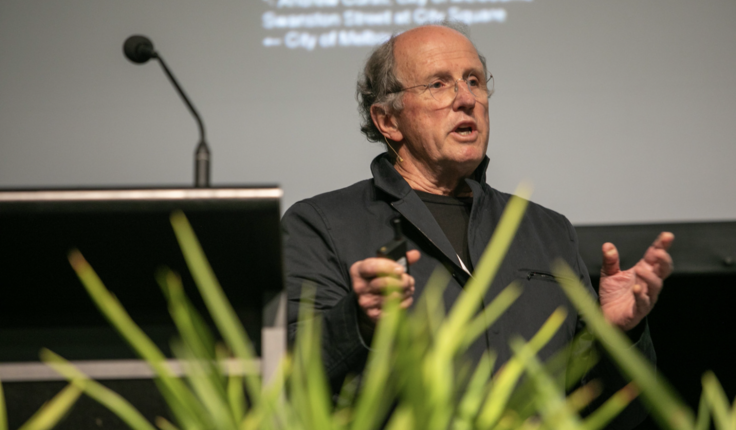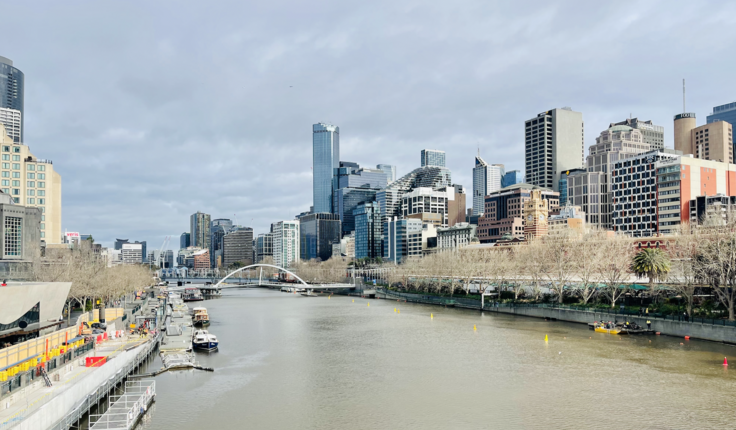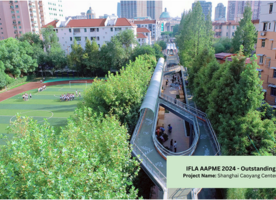News
2023 NZILA Firth Conference - Professor Rob Adams
Posted 14 06 2023
in News

Watch Video
Melbourne's transformation into a resilient and liveable city was the focus of a presentation by Professor Rob Adams at the recent 2023 NZILA Firth Conference in Whakatū Nelson.
Professor Adams is the city architect and former director of city design at the City of Melbourne. The multi-award-winner ‘s vision and drive over around 40 years have helped to shape the city of Melbourne into one of the world’s leading examples of best practice in urban design. He spoke to conference delegates about this journey and shared the ten steps that have shaped Melbourne's urban landscape and made it a model for other cities to follow.Professor Rob Adams presenting at the 2023 NZILA Firth Conference.
He outlined how the journey towards resilience began in 1985 when Melbourne faced significant challenges. Professor Adams emphasized the importance of partnerships between politicians, administrators, and various stakeholders, which led to the development of a comprehensive strategy. The vision was simple, he says: to create a 24-hour city that retained Melbourne's unique character.
The first step in the transformation process was building to the local character of the city. Professor Adams highlighted the use of bluestone paving stones as an example, which have become a distinct feature of Melbourne's streetscape. The city also had a network of parks known as the "emerald necklace," but many of them were not originally part of Melbourne. However, breaking down boundaries and incorporating these parks into the city added to its character and livability.
He also believes Incrementalism has played a crucial role in Melbourne's transformation. By focusing on small changes over an extended period, the city was able to achieve long-term success. Another aspect was the revitalisation of laneways and arcades, turning them into vibrant spaces that people could use and enjoy.
Mixed-use development was another key element in Melbourne's transformation, Professor Adams explains. By creating a city where people could access everything they needed within walking distance, the city reduced the reliance on cars and maximised the use of existing infrastructure.
Density was a contentious issue, but Melbourne has demonstrated that it is possible to achieve good densities without resorting to high-rise buildings.
He outlines how the city had embarked on a programme to bring people back to live in the central area, repurposing old office buildings into residential spaces. The population in the city centre increased from 685 in the late 1980s to 65,000 in recent years, resulting in a transformed urban environment.

Professor Adams says Melbourne also focused on designing good streets, considering them as the most important public spaces in the city. The incorporation of trees played a vital role in enhancing the streetscape and creating a more pleasant and sustainable environment. "The cheapest, simplest, most effective thing we can do to our cities is plant trees," he says.
Connectivity was another critical aspect of Melbourne's transformation. Although the car was dominant in the city, the strategy was to gradually reclaim parts of the streets and create pedestrian-friendly spaces. This approach, known as "Greater Green," involved widening footpaths, banning sandwich boards, and encouraging outdoor dining, which led to increased pedestrian numbers and again, that vibrant street life.
The creation and enhancement of parks and public spaces were also essential in Melbourne's journey towards resilience. Major projects like Federation Square and the redevelopment of the Queen Victoria Market continue to transform the city centre, while initiatives such as the Green Line are focusing on improving the banks of the Yarra River.
Professor Adams says adapting to climate change is a key consideration as well. Melbourne has developed an urban forest strategy aimed at increasing canopy cover and diversifying tree species. The strategy also includes innovative approaches to capturing and storing rainwater, ensuring sustainable water management.
Professor Adams emphasised the importance of public-private partnerships in achieving these urban transformations. By leveraging the city's assets and collaborating with private developers, he says, Melbourne has been able to revitalise key areas, generate revenue, and fund projects.
Looking to the future, Professor Adams says Melbourne aims to continue to implement similar strategies in its metropolitan areas. The focus is on developing density along transportation corridors and grayfield sites, while preserving and enriching the surrounding neighbourhoods. This approach would create new green lungs in the suburbs, promoting sustainability and reducing the need for costly infrastructure expansion.
Professor Rob Adams' presentation highlighted Melbourne's remarkable journey towards becoming a livable and resilient city. The ten steps outlined serve as a blueprint for other cities seeking to transform their urban environments, encouraging partnerships, embracing local character, promoting mixed-use development, prioritizing good street design, and addressing climate change and connectivity.
Share
10 Dec
Proposed replacement of the RMA: Planning Bill and Natural Environment Bill

A message from the Environmental Legislation Working Group
On Tuesday this week, the Government released proposed bills to replace the Resource Management Act 1991. Reform of our planning …
03 Dec
Newly Registered Landscape Architects 2025

Celebrating professional achievement across Aotearoa The 2025 Registration process is now nearing completion, and we are delighted to acknowledge the …
02 Dec
2025 IFLA APR Newsletter

November Edition
2025 IFLA APR Newsletter: November Edition November brings exciting updates from across the region. We’re welcoming the new IFLA APR …
Events calendar
Full 2025 calendar